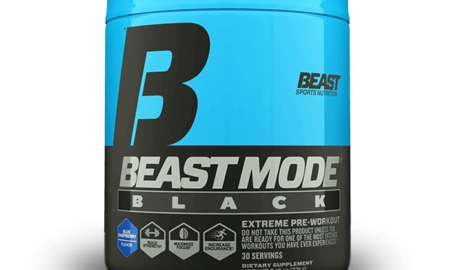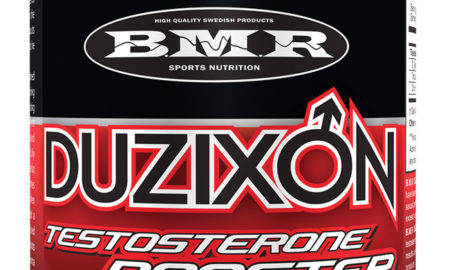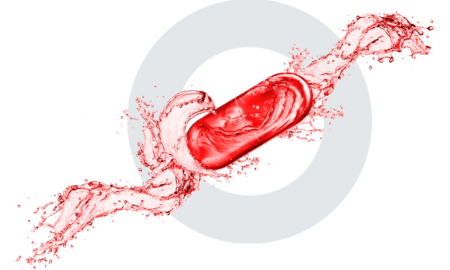Anabolic steroid use is demonized in the media, primarily because it’s considered morally unethical in sports. That judgment implies that anabolic drugs give athletes an unfair advantage, even those who already show genetic superiority. The other major issue with steroids is their effects on health.
Anti-steroid advocates characterize the drugs as extremely dangerous and likely life threatening; however, that point of view seems to be more rooted in emotions than in reality. The existing body of medical literature doesn’t back up the hysterical warnings. Cases of direct-cause mortality related to steroids are rare, most often turning up as individual-case studies published in medical journals.
Not that high-dose-steroid regimens are safe by any means. As with other drugs, the possible side effects of steroid use relate to time and dose—the longer you take them and the higher the dose, the greater the chance of serious side effects. Most rational athletes are aware of that and don’t stay on the drugs year-round. Indeed, studies show that when athletes get off a steroid regimen, nearly all the side effects (and most are minor) return to normal values. Since no two humans have identical physiologies, however, there are always exceptions who because of genetic susceptibility do experience unexpected and often serious side effects. In rare cases steroids have been linked to premature death, again always indirectly.
Research shows that steroids exert the greatest stress on the liver and the cardiovascular system. Liver stress is most associated with oral anabolic steroids. The reason is that unlike testosterone, which rapidly degrades in the liver when taken, oral steroids are synthetic versions of testosterone that have been structurally modified to resist premature breakdown in the liver. That resistance is the primary cause of oral-steroid-related liver problems, which start with an inflammation of the liver, indicated by a rise in liver enzymes. Left untreated—or if it continues for an extended time—the inflammation can cause liver damage and possibly lead to a liver tumor.
In terms of cardiovascular stress, once again oral steroids seem to be the primary culprit. Steroids can adversely affect cardiovascular function a number of ways. One is by changing the balance of blood fats.
Using oral steroids stimulates a liver enzyme that prematurely degrades high-density lipoprotein, a.k.a. the good cholesterol. HDL protects against cardiovascular disease, and the higher the plasma HDL level, the greater the protection. Steroids lower HDL by 20 to 70 percent, and orals are so potent at it, some blood tests of steroid-using bodybuilders have failed to find any HDL in the blood.
Low-density lipoprotein is the primary transporter of cholesterol in the blood. When oxidized, LDL is considered a main cause of atherosclerosis. High-dose-steroid regimens tend to increase LDL, and that, along with the lowering of protective HDL, increases the user’s chance of getting cardiovascular disease three to six times above normal. Steroids boost LDL by an average of 20 percent. One study found LDL levels as high as 569 micrograms per deciliter in steroid users, along with HDL levels of 14 micrograms per deciliter. Normal values are 100 or less for LDL and 40 and above for HDL.
Most heart attacks are initiated by two primary factors: a coronary artery narrowed by plaque and the existence of a blood clot that occludes the narrowed artery, depriving the heart of blood and oxygen. That leads to the death of heart tissue. High-dose-steroid regimens tend to encourage the formation of blood clots through an adverse effect on various clotting factors, such as blood platelets. Steroid users produce more thromboxane A2, which promotes platelet aggregation in the blood, while lowering prostacylin, which prevents it, ultimately encouraging blood clot formation.
In addition, both injectable and oral steroids stimulate the production in the liver of erythropoetin, or EPO, a substance that controls red blood cell production. That causes the body to produce more red blood cells, which can overly thicken the blood, a condition known as polycythemia that can increase the risk of blood clots as well as heart attacks and strokes. The most common side effect in older men who are getting hormone-replacement therapy involving testosterone injections is polycythemia. Recently, that side effect has been linked to a testosterone-based suppression of an iron transport protein in the blood. It’s more likely to occur in men over 40 and in those using testosterone injections of more than 150 milligrams per week.
Vascular spasms can trigger sudden heart attacks, and some evidence suggests that high-dose anabolic steroid use can increase the chance of vascular spasms. Steroids decrease the production of cyclic GMP by inhibiting the enzyme needed for its synthesis. When combined with an increase in oxidized LDL, this scenario results in a weakened ability to form nitric oxide, which dilates blood vessels and prevents vascular spasms. Steroids can also induce high blood pressure, which directly damages the lining of blood vessels, damage that also increases the chance of vascular spasms. Blood pressure readings as high as 195/110 have been recorded in steroid users; normal is 120/80. Elevated blood pressure is known to persist for five to 12 months after people stop using steroids. Steroids are also known to increase blood homocysteine, a metabolite of the essential amino acid methionine that also damages the lining of blood vessels.
While all of the above explains how steroids can induce long-term cardiovascular risk, it doesn’t explain the cases on record of bodybuilders and other athletes who have used high-dose-steroid regimens and then dropped dead. Again, while those cases are relatively rare, they do occasionally occur. What can cause a person who’s using a lot of steroids to die suddenly of cardiovascular complications?
Recent research shows that steroids interfere with the normal compensation effects induced by exercise in the heart. Any type of lifting will affect the heart, since the heart is a muscle. When you lift heavy weights for a long time, it triggers an increase in the thickness of the left ventricle of the heart, the heart’s pumping chamber. The condition is known as “athlete’s heart,” and it isn’t considered pathological, since it doesn’t impair the heart’s ability to pump blood. The heart also enlarges under pathological conditions, such as long-term untreated high blood pressure. That type of enlarged heart does have a reduced capacity for pumping blood, which is known as heart failure. Steroids induce an enlargement of the left ventricle that goes beyond what’s induced by exercise, and studies show that using growth hormone along with steroids increases it.1 Some scientists think that the steroid-induced enlargement can be a precursor of future heart failure.
When an endurance athlete experiences heart enlargement, the pumping chambers of the heart enlarge, not just the ventricle wall, the way it works with heavy training or using steroids. The latter effect is known as uncompensated hypertrophy and is linked to ventricular dilation, heart failure and reduced tolerance for a lack of blood flow in the heart. One study found that steroids cause an enlargement of heart cells but with decreased development of associated capillary formation. That, in turn, can decrease oxygen delivery in the heart. In one study of rats on steroids the rodents lost their ability to resist ischemia, or decreased blood flow in the heart, after swimming. The lack of blood flow tends to increase the production of free radicals, which can damage the heart. Normally, the body prevents such damage thanks to built-in antioxidants, but antioxidant production is blunted with high-dose-steroid use, thereby increasing stress on the heart during exercise. Recent studies also show that using steroids blocks the usual increase in maximal oxygen uptake induced by aerobic exercise.
The left ventricle of the heart enlarges with steroid use because of androgen cell receptors in the heart, but the enlargement also interferes with the diastolic function, or the refilling of blood in the heart. That effect is thought to be caused by an increase in small amounts of scar tissue in the heart due to a high-dose-steroid regimen. Indeed, pathology reports of bodybuilders on steroids who succumbed to cardiovascular disease showed small bands of scar tissue around the heart. That eventually compromises heart activity and can cause a sudden massive heart rhythm disturbance, possibly resulting in death. The same thing happens in those who habitually use cocaine and explains the cases of sudden death in coke addicts. Animal-based studies show that steroids make the heart more sensitive to the effects of epinephrine, leading to the localized death of heart cells, which interferes with the normal electrical conduction pathways of the heart. That, in turn, can cause a sudden heart rhythm disturbance that can become fatal.
The adrenal overstimulation of the heart caused by high-dose steroids also lowers the parasympathetic response, slowing the heart rate. In practical terms, you may get a slower-than-normal recovery of the heart following exercise. The lower parasympathetic response can also induce an arrhythmia of the heart, leading to sudden death. A slower-than-usual return of the heart to normal after exercise in a steroid user is an ominous sign of heart stress.
High-dose-steroid regimens cause direct heart cell injury by disrupting myocardial mitochondria and also inducing abnormal collagen deposits in the heart. That leads to the development of excess scar tissue, which increases the chance of a serious heart rhythm disturbance. A recent study suggests that the incidence of left-ventricular dysfunction in long-term steroid users is grossly under-reported and may be far more common.2 In fact, 83 percent of steroid users in the study showed an ejection fraction, a measure of the heart’s pumping ability, of less than 55 percent. Normal values are 55 to 70 percent. The researchers also found that the diastolic function of the heart, when the heart relaxes after pumping blood, was reduced by half compared to nonusers. The subjects consisted of 12 males, average age 40, who reported using an average of 675 milligrams of steroids per week for nine years.
A preliminary animal study published two years ago found that using two drugs, dexrazoxane and trimetazidine, blocked most of the structural and cellular damage induced by high-dose steroids.3 Trimetazidine, trade name Vastarel, is used to treat angina pectoris, which is chest pain caused by a narrowing of coronary arteries. It works by blocking the normal use of fat as fuel for the heart, causing a greater use of glucose. That prevents a drop in ATP, or energy levels, in the heart. Dexrazoxane is available as Zinecard and appears to protect the heart against the toxic effects induced by various substances, including free-radical damage caused by having a lot of free iron in the blood. This was a preliminary animal study and needs to be replicated in human subjects before the drug can be routinely prescribed to prevent steroid-related heart damage.
All of that explains how using high-dose steroid regimens can result in sudden death.4 It’s a combination of the localized death of heart cells and disturbances in the electrical conduction system of the heart related to both heart enlargement and excessive adrenergic stimulation of the heart coupled with a lack of sufficient parasympathetic response. A steroid user who also uses drugs such as amphetamines or cocaine compounds the problem significantly and increases the likelihood of sudden death.
References
1 Karila, T.A., et al. (2003). Anabolic-androgenic steroids produce dose-dependent increase in left ventricular mass in power athletes, and this effect is potentiated by concomitant use of growth hormone. Int J Sports Med. 24:337-43.
2 Baggish, A.L., et al. (2010). Long-term anabolic-androgenic steroid use is associated with left ventricular dysfunction. Circ Heart Fail. 3:472-76.
3 Belhani, D., et al. (2009). Cardiac lesions induced by testosterone: Protective effects of dexrazoxane and trimetazidine. Cardiovasc Toxicol. 9:64-69.
4 Nascimento, J.H.M., et al. (2011). Cardiac effects of anabolic steroids: Hypertrophy, ischemia, and electrical remodelling as potential triggers of sudden death. Min Rev Medic Chem. In press.




















You must be logged in to post a comment Login